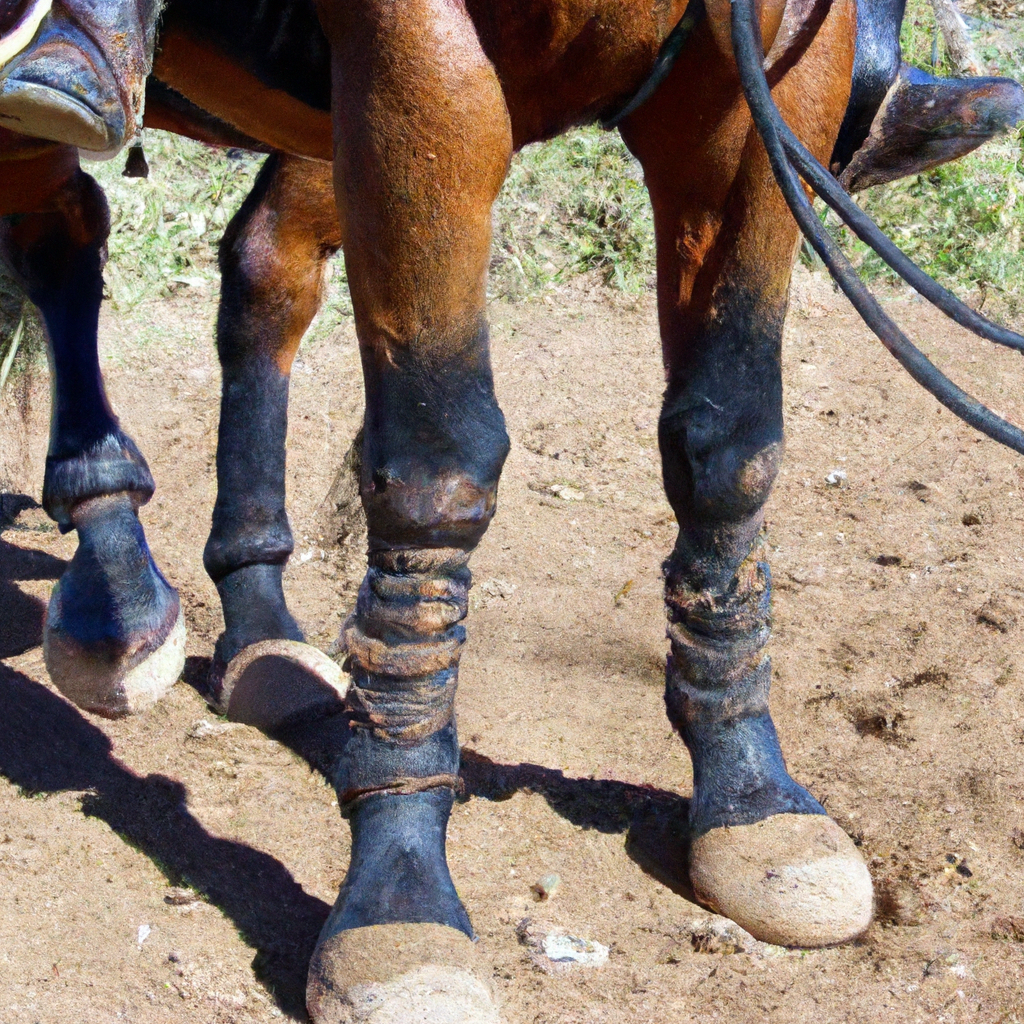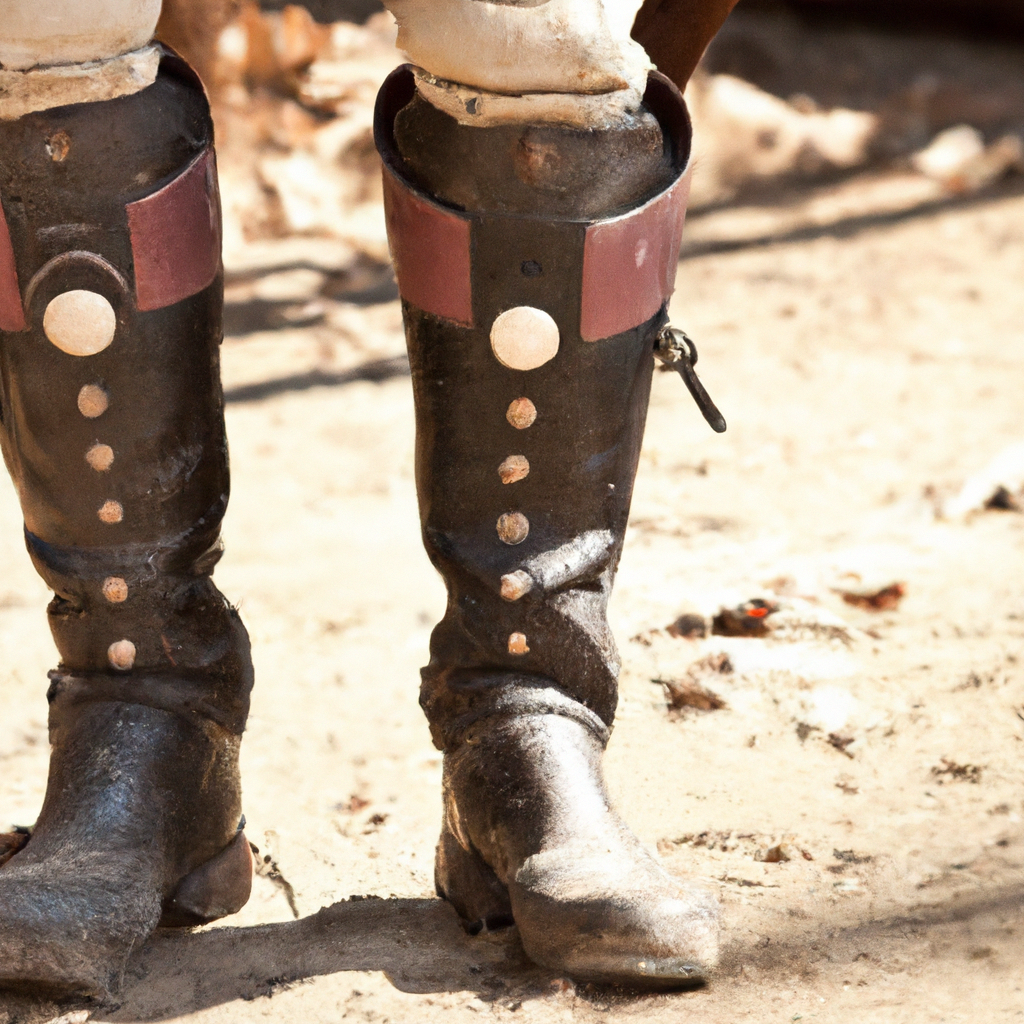If you’re looking to improve your endurance and have fun while doing it, then horseback riding might be the perfect activity for you. Not only is it a great way to explore the outdoors, but it also provides several physical and mental benefits. In this article, we’ll delve into the various advantages of horseback riding for endurance. Whether you’re a seasoned equestrian or a beginner, you’ll discover how this activity can improve your cardiovascular fitness, strengthen your core muscles, and enhance your coordination and balance. So saddle up and get ready to experience the incredible benefits that horseback riding has to offer.

The Physical Benefits
Improves cardiovascular endurance
Horseback riding is a great form of exercise that can improve your cardiovascular endurance. As you ride, your heart rate increases, and your cardiovascular system works harder to supply oxygen to your muscles. This helps to strengthen your heart and lungs, improving your overall endurance.
Increases muscular strength and endurance
When you ride a horse, you engage a variety of muscles in your body. Your leg muscles work to control the horse’s movements, while your core muscles stabilize your body in the saddle. Riding regularly can help to increase the strength and endurance of these muscles, making you stronger and more resilient.
Improves balance and coordination
Maintaining balance and coordination is essential when horseback riding. You need to synchronously communicate with your horse, shifting your weight and adjusting your body position to stay balanced. Over time, this improves your overall balance and coordination skills, which can transfer to other areas of your life.
Enhances flexibility
Horseback riding requires a certain level of flexibility, especially in your hips, pelvis, and lower back. As you ride, you move with the horse’s motion, stretching and flexing these areas of your body. Regular riding can help to improve your flexibility, making you more agile and less prone to injuries.
Promotes weight loss
Horseback riding can be an effective way to promote weight loss. Riding requires physical exertion, and the more intense the ride, the more calories you burn. Additionally, riding can help to build muscle, which increases your metabolism and helps you burn calories even when you’re not riding. Combine riding with a balanced diet, and you’ll be on your way to shedding those extra pounds.
Mental and Emotional Benefits
Reduces stress and anxiety
Spending time with horses can have a calming effect on your mind and help reduce stress and anxiety. The connection between humans and horses is therapeutic, and simply being in their presence can lower your stress levels. Riding itself can provide a sense of escapism and relaxation, allowing you to clear your mind and focus on the present moment.
Enhances mood and mental well-being
There’s something about being around horses that lifts your spirits and improves your mood. The combination of fresh air, physical activity, and the bond with these magnificent animals releases endorphins in your brain, which are known as the “feel-good” chemicals. Horseback riding can be a natural mood enhancer and promote overall mental well-being.
Boosts self-esteem and confidence
As you become more experienced and skilled at horseback riding, your self-esteem and confidence naturally grow. Mastering new riding techniques, connecting with your horse, and achieving personal goals in the saddle can all contribute to a boost in confidence. The sense of accomplishment you get from successfully riding and communicating with a powerful animal can be incredibly empowering.
Improves focus and concentration
When you ride a horse, you need to be fully present and focused on the task at hand. Your attention is required to anticipate the horse’s movements, react to their cues, and navigate the environment. Regular riding can improve your focus and concentration skills, which can then transfer to other areas of your life, such as work or school.
Improves Respiratory Function
Strengthens respiratory muscles
Horseback riding engages your respiratory muscles, including the muscles of your diaphragm and chest. These muscles are responsible for expanding your lungs and drawing in air. Regular riding can help to strengthen these muscles, improving their efficiency and increasing your lung capacity.
Increases lung capacity
By consistently riding, you can increase your lung capacity. Lung capacity refers to the maximum amount of air that your lungs can hold. As your lung capacity increases, you’ll be able to take in more oxygen with each breath, improving your overall respiratory function.
Enhances oxygen uptake
Improved respiratory function and increased lung capacity lead to enhanced oxygen uptake. Oxygen is essential for the functioning of your body’s cells and organs. With better oxygen uptake, your body can efficiently deliver oxygen-rich blood to your muscles, boosting their performance and aiding in recovery.
Develops Core Strength
Engages core muscles for stability
Horseback riding requires a stable and upright posture, which involves engaging your core muscles. These muscles, including your abdominals, obliques, and lower back muscles, work together to maintain balance and stability while riding. Regular riding can help to strengthen and tone your core, improving your overall posture and stability.
Improves posture and spinal alignment
Sitting tall and maintaining proper alignment of your spine is crucial when horseback riding. By consistently practicing good posture on the saddle, you can improve your spinal alignment and develop better posture habits off the horse as well. Good posture not only makes you look more confident but also contributes to a healthier spine and reduces the risk of back pain.

Increases Joint Mobility
Promotes joint flexibility and range of motion
Horseback riding involves a wide range of movements that can promote joint flexibility and increase your range of motion. The motion of the horse’s gait, combined with the need to adjust your position in the saddle, helps to work your joints through their full range of motion. This can be particularly beneficial for individuals with joint stiffness or conditions such as arthritis.
Helps with joint lubrication and shock absorption
The repetitive movements and impact of riding can help with joint lubrication and shock absorption. As your joints move and bear weight, the synovial fluid within them is stimulated, providing lubrication and reducing friction. This helps to maintain the health of your joints and can alleviate joint pain and stiffness.
Boosts Endurance Performance
Builds overall stamina and endurance
The physical demands of horseback riding, especially during long rides or intense training sessions, can significantly improve your stamina and endurance. Riding requires both aerobic and anaerobic energy systems, strengthening your cardiovascular system and muscles involved in endurance activities. Increased stamina and endurance can benefit you in various other physical activities, such as running or cycling.
Enhances energy efficiency
Efficient energy usage is essential for endurance performance. Horseback riding forces you to find balance and conserve your energy while riding. By learning to use your body effectively and maintain efficient movements, you can enhance your energy efficiency, prolong your endurance, and perform better during long rides or competitions.
Improves Balance and Coordination
Strengthens muscles used for balance
Maintaining balance on a moving horse necessitates the use of specific muscles responsible for stability. Horseback riding strengthens these muscles, including the muscles of your legs, hips, and core. The more you ride, the more these muscles are engaged and developed, resulting in improved balance on and off the horse.
Improves proprioception and spatial awareness
Proprioception refers to your body’s ability to sense its position and movement in space. Horseback riding requires constant adjustment and awareness of your body’s position relative to the horse’s movements. This develops your proprioceptive abilities and enhances spatial awareness, which can be beneficial for activities that require precise coordination and movement, such as playing sports or dancing.
Promotes Mental Focus
Requires concentration and mindfulness
Riding a horse demands your full attention and concentration. You need to be aware of your surroundings, your horse’s behavior, and the cues you are giving and receiving. This level of focus encourages mindfulness, keeping you present in the moment and allowing any stressors or distractions to fade away temporarily.
Enhances cognitive abilities
The mental stimulation provided by horseback riding can enhance your cognitive abilities. Riding requires problem-solving, decision-making, and quick thinking, all of which engage different areas of your brain. Regularly practicing these cognitive skills while riding can strengthen your neural connections, improve your memory and attention span, and enhance overall cognitive function.
Enhances Spatial Awareness
Improves perception of space and distance
Riding a horse provides a unique perspective and improves your perception of space and distance. As you navigate through different terrains and obstacles, you develop a better understanding of distances and spatial relationships. This enhanced spatial awareness can be useful in various activities, such as driving or participating in sports.
Enhances peripheral vision
Horseback riding requires you to be aware of your surroundings, including what’s happening to your sides and behind you. This constant vigilance can improve your peripheral vision, allowing you to have a broader field of observation. Enhanced peripheral vision can be valuable in many situations, such as driving, playing sports, or even daily activities like crossing the street.
Provides a Full-Body Workout
Engages multiple muscle groups simultaneously
Horseback riding is a comprehensive workout that engages multiple muscle groups simultaneously. Your legs, core, back, and arms all work together to maintain correct posture, control the horse’s movements, and communicate with the animal. Each time you ride, you’re giving your entire body a workout, helping to tone and strengthen these muscle groups.
Burns calories and builds muscle
Riding a horse is not only physically demanding but also burns calories. The intensity of the ride and the duration of the activity determine the number of calories burned. Additionally, the resistance provided by the horse’s movements and the engagement of various muscle groups help to build lean muscle, contributing to a more toned physique.
Horseback riding offers an array of physical, mental, and emotional benefits. From improving cardiovascular endurance and muscular strength to enhancing focus and spatial awareness, there are many reasons to give horseback riding a try. Whether you’re a beginner or an experienced rider, the rewards of this timeless activity are not only physical but also deeply rewarding for your overall well-being. So saddle up and experience the joys of horseback riding for yourself!
